As a geriatric millennial, I’ve always known the term “culture vulture” to indicate a voracious enjoyer of books and media. Recently, I’ve seen it used as a pejorative for artists practicing cultural appropriation. Language is fluid and ever-evolving, but whatever you want to call them, indie cartoonists have a longstanding love affair with pop culture. The influence goes both ways, creating an endless feedback loop.
Perpetual Motion Machine, a new show at Project Onward, an assisted studio for artists with disabilities in Chicago’s Bridgeport neighborhood, showcases seven artists whose work remixes, reimagines and transcends their pop cultural influences. The show, thoughtfully hung in Project Onward’s cheerful, light-filled space in the Bridgeport Art Center, features full-sized, framed comics pages as well as paper sculptures, a video, and paintings by the artists, most of whom work in a variety of media. A 60-page full-color anthology zine accompanies the exhibit (the anthology is available for purchase here ), but it's uniquely satisfying to see the pages on the wall alongside preparatory sketches and other ephemera that didn’t make it into print.

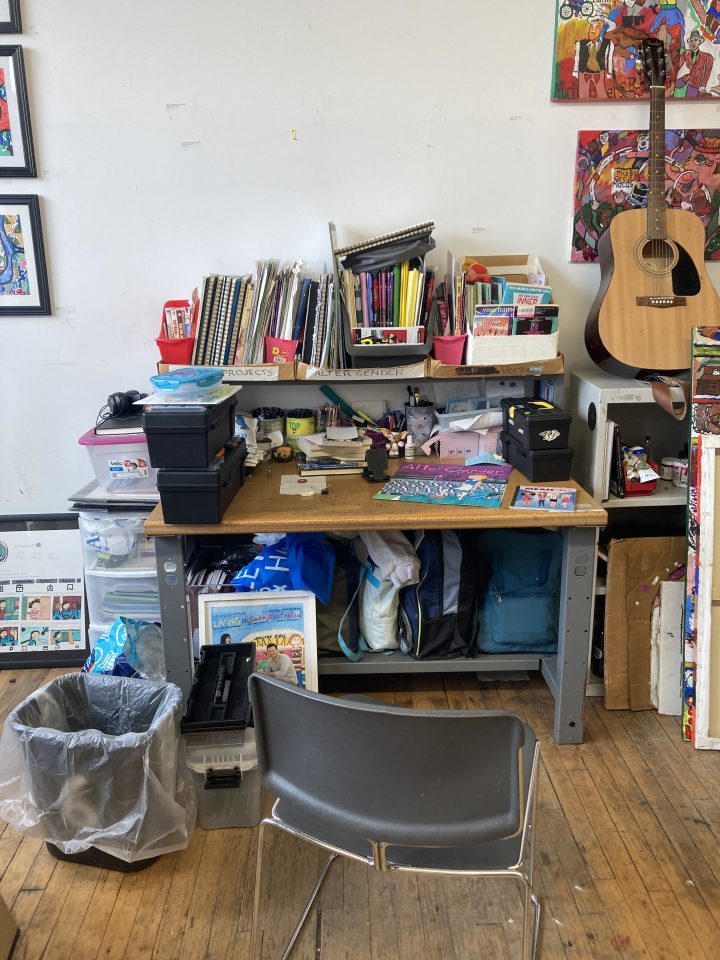
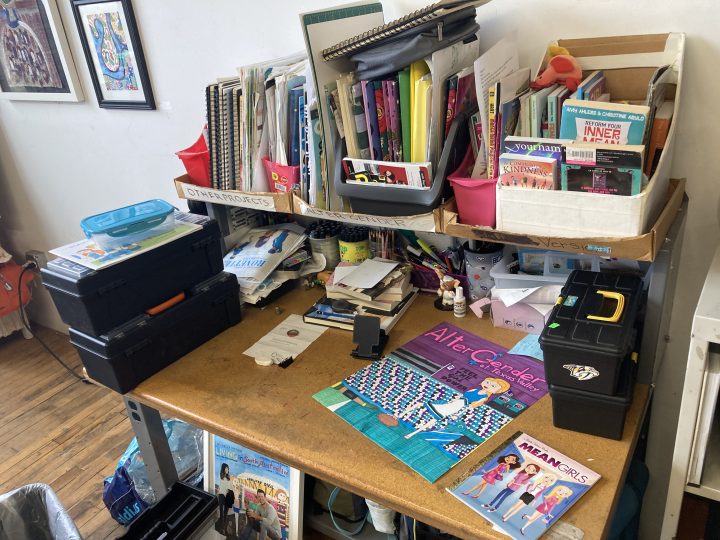
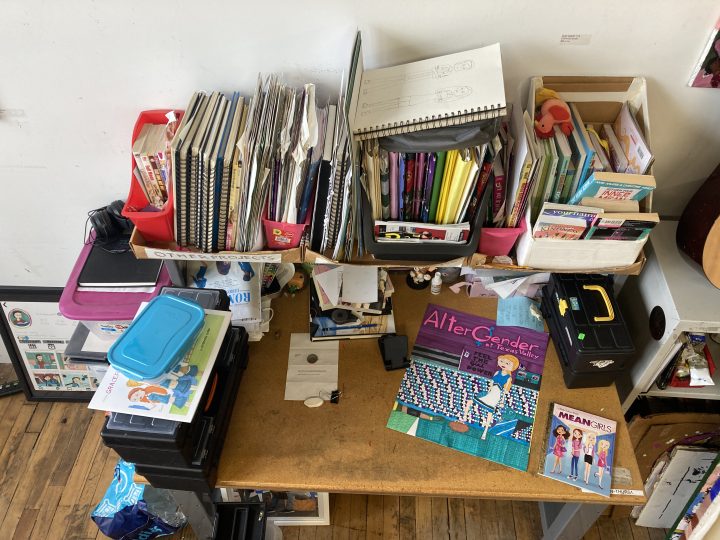
Stephon Doby, the creator of the Alter Gender series, has been working with Project Onward since 2014. Drawing from a variety of influences, from Disney tie-ins to self-help manuals to Funko Pops, Doby has created an addictive teen drama that’s funnier, more subversive, and exponentially more entertaining than anything conceived by the CW. Following the Opossums, a high school football team, and their irrepressible cheerleading squad after a collision with a medical waste tanker, this latest installment of the series, which began last year with a standalone zine, finds the unharmed members of the cheer squad reeling in the accident’s aftermath.
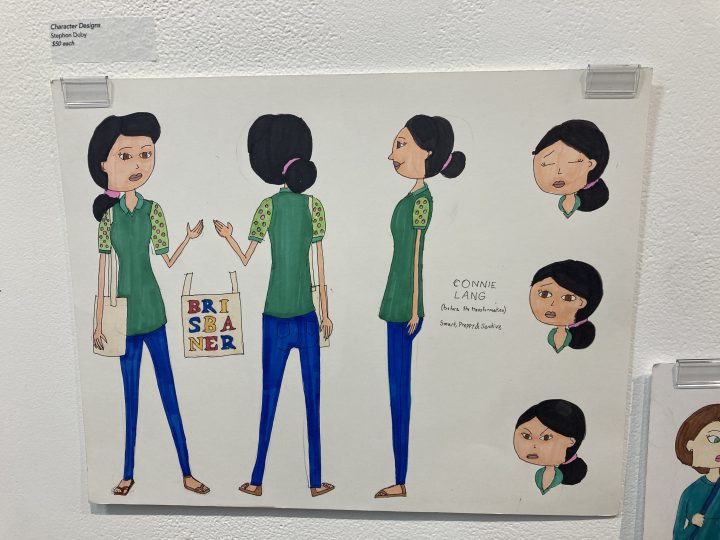
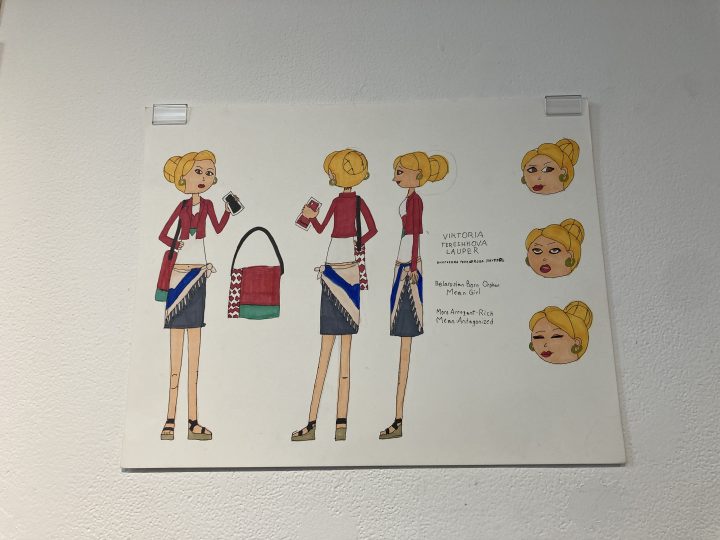

Reading Alter Gender, I couldn’t help but think of Jane Schoenbrun’s I Saw the T.V Glow (2024), which features two high school friends, Owen and Maddy, bonding over the Pink Opaque, a show inspired by Buffy the Vampire Slayer. The show itself is nothing special: campy teen trash, but its themes of female friendship and resilience compel the protagonists to painful growth.
According to Nick Jackson, a cartoonist and studio facilitator at Project Onward, Doby was a program pioneer. As Doby conferred with Jackson to develop his composition and storytelling skills, other artists, many of whom were already working in narrative series, were inspired to pick up the medium or pursue it more seriously. In a shared studio space, artists take as much inspiration from one another as they do from the outside world.

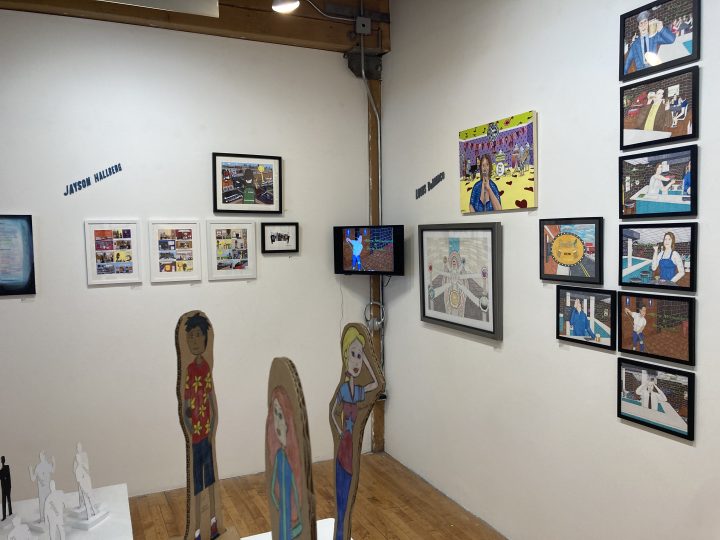


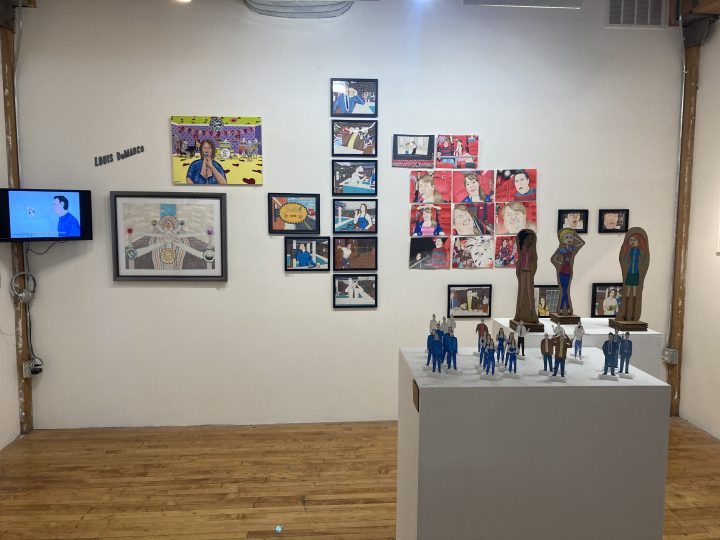
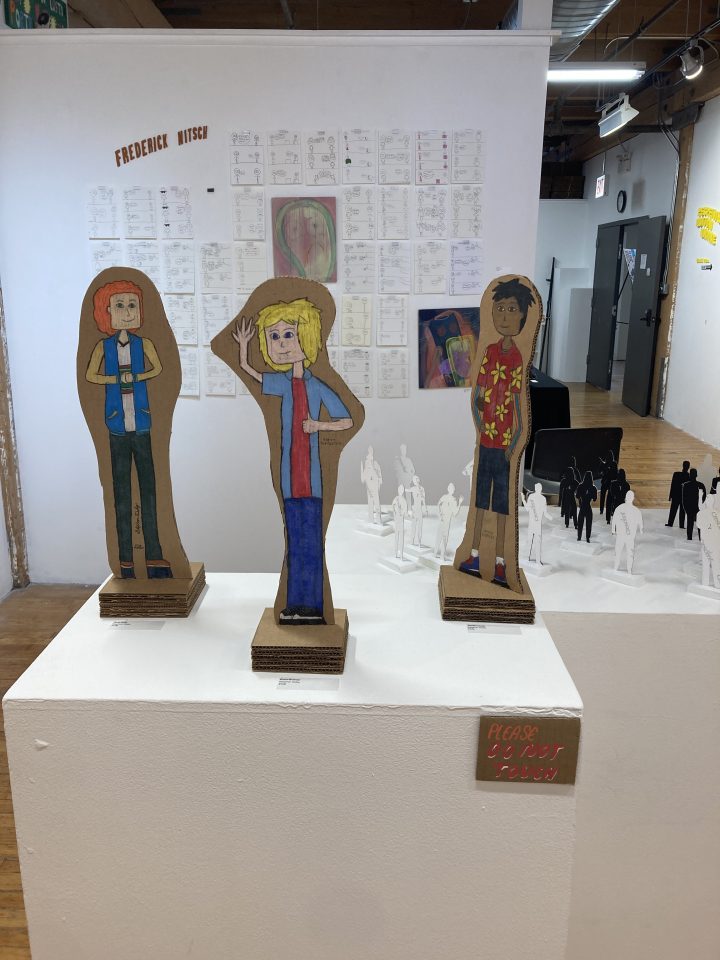
This influence is particularly apparent in pieces by Jayson Hallberg, whose charming The Jayson and Ricky D Showdown, an ode to the artist’s friendship with another Project Onward participant, is the only purely autobiographical piece in the show. Digitally drawn in a clear line style and featuring bright, flat colors, it has the aesthetic of Johnny Ryan with the heart of Charles Schulz.
Louis DeMarco’s Toaster also includes cameos from Project Onward participants. Inspired by Cheers, Toaster features some of the artist’s friends reimagined as patrons of a fictional Chicago bar. DeMarco’s photo-referenced drawings resemble Fumetti or rotoscoped animation, with mindbending psychedelic elements thrown in. Not to be missed is a video trailer for the comic, complete with a theme song.
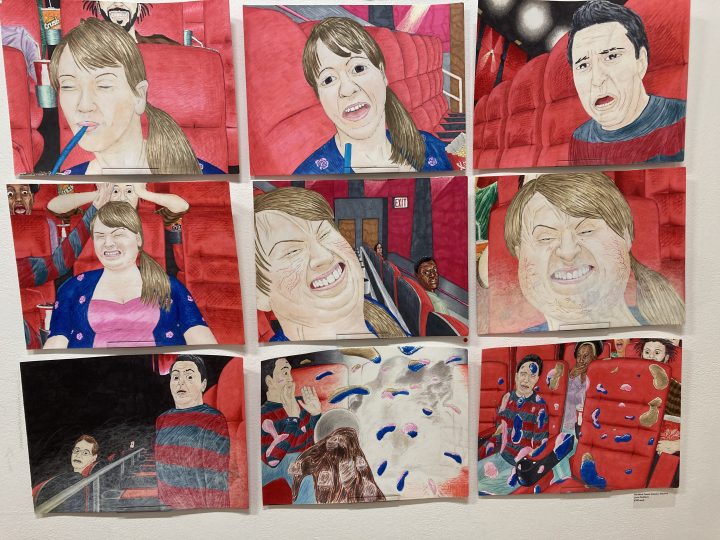

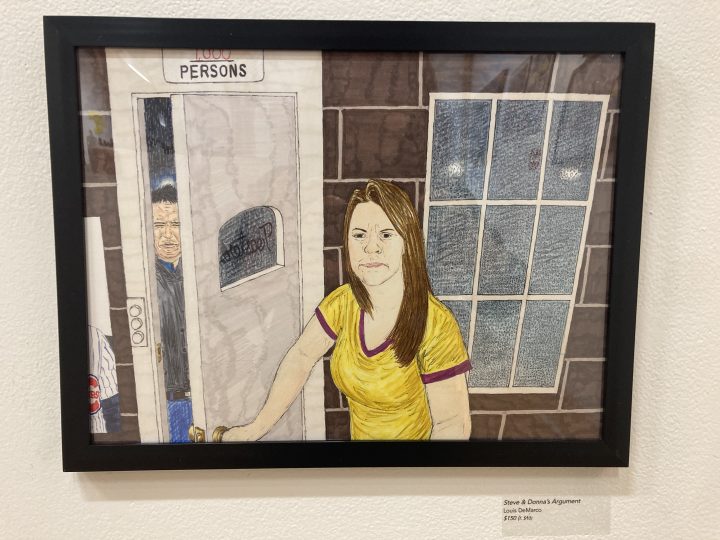
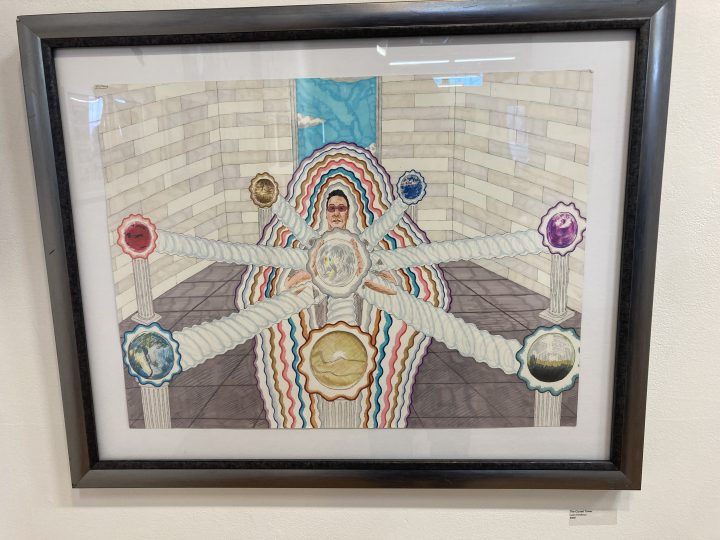
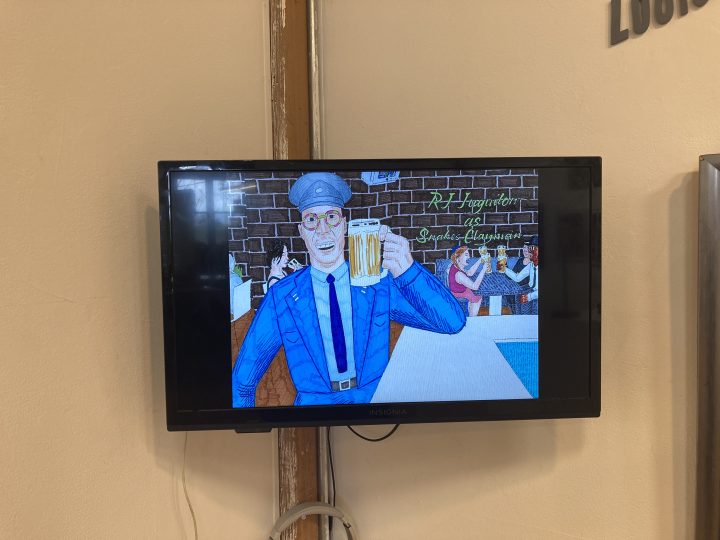
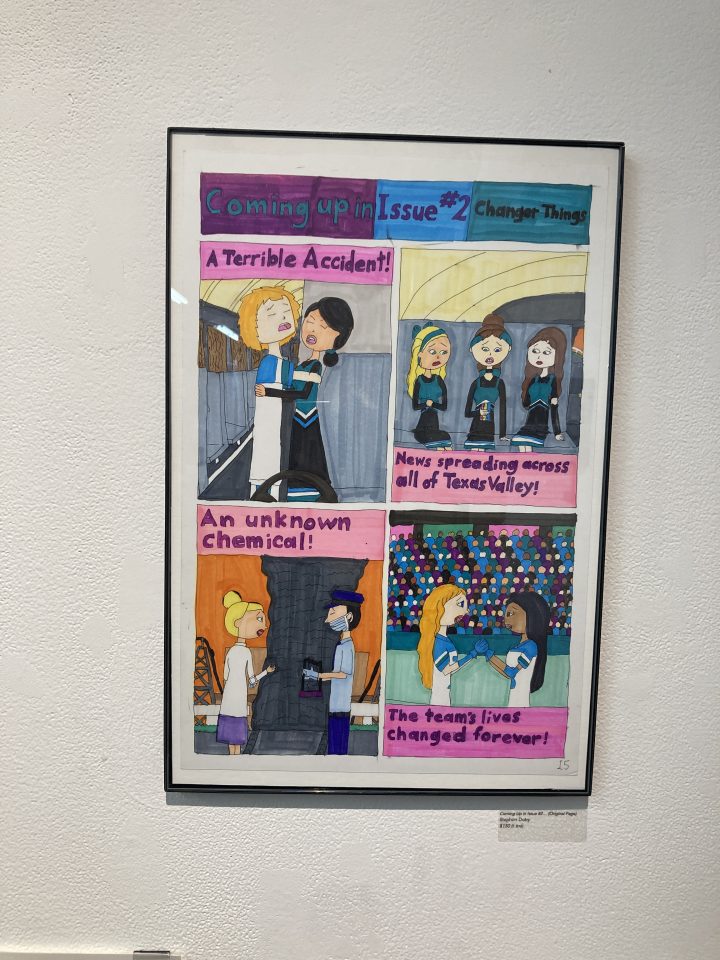
Sophie Frolich and Alfred Banks both weave lived experience with fantastical elements. Frolich’s So I Met a Grumpy Lizard in a Cave Today, which shares the grungy amerimanga aesthetics of Liby Hays’ Geniacs, riffs on internet culture and quest narratives, while Banks’s wordless The Pack, painted in saturated watercolors, investigates the fraught relationship between humans and the natural world.
Frolich, born in 1998, began drawing fanfiction in her freshman year of high school, but became daunted and set the project aside. Five years ago, she picked comics back up and dedicated herself to honing her craft. After thumbnailing her stories, she and Jackson discuss plot and pacing, and she then finalizes her artwork, drawing in ink on paper before scanning the pages and adding digital halftones.
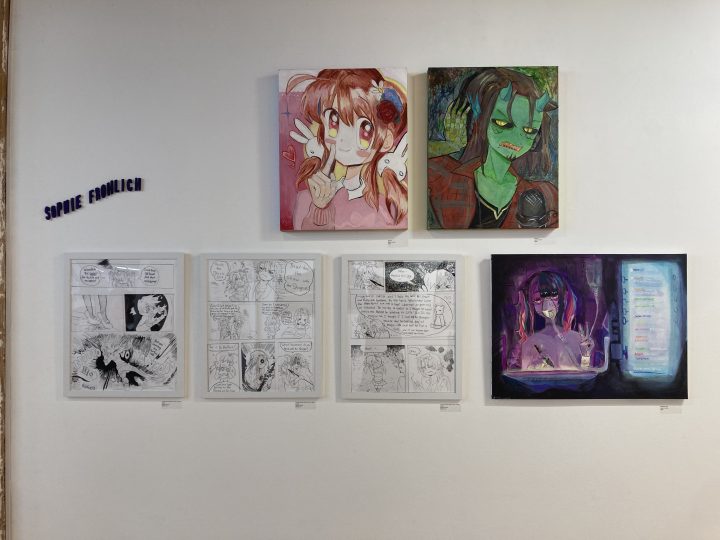

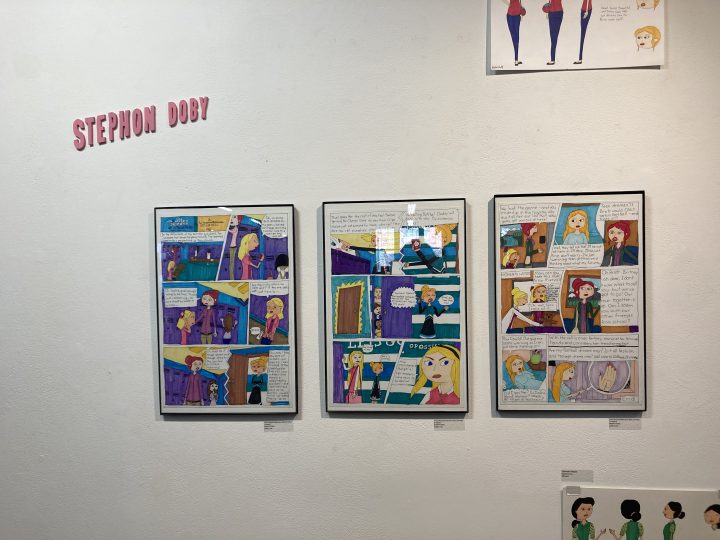
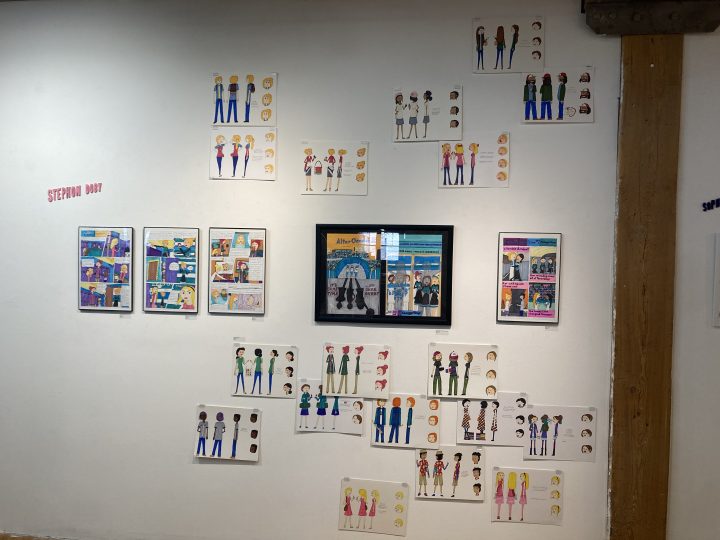

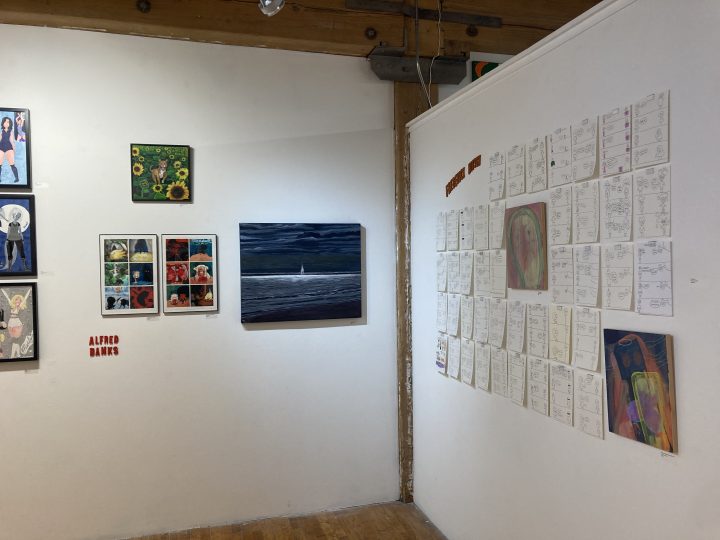

Jacqueline Cousins' contribution, a professional wrestling match between fictional superstars Billie Blackbird and Princess Karen Suzuki, dazzles with its intricately drawn outfits and backgrounds. Cousins, who’s been with Project Onward since 2011, draws with markers and gel pens, occasionally embellishing her pages with liquid pearls and acrylic diamonds. Jaime Hernandez’s magnificent wrestling drawings were not a direct influence, but it’s tempting to make the connection. Great minds love wrestling and comics.
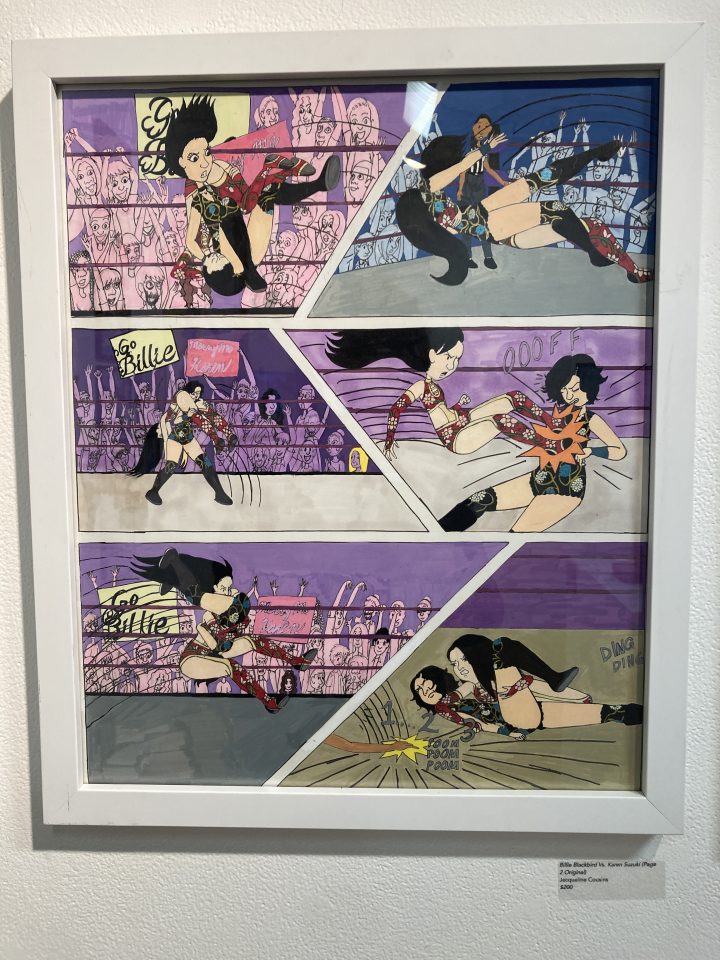
Finally, Frederick Nitsch contributes dozens of minimalist strips, alongside two abstract acrylic paintings. The comics, which have some of the formal playfulness of Erik Nebel, mix dad jokes with surrealist pathos. They represent everything I appreciate about the medium: accessibility, immediacy, and universality.
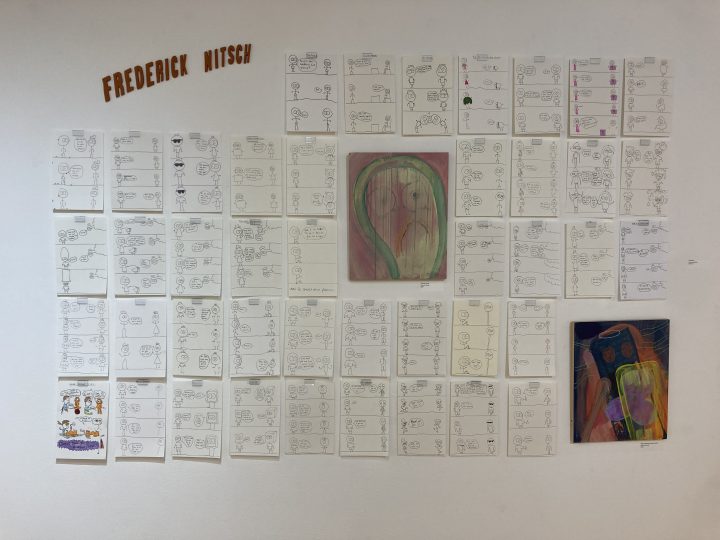


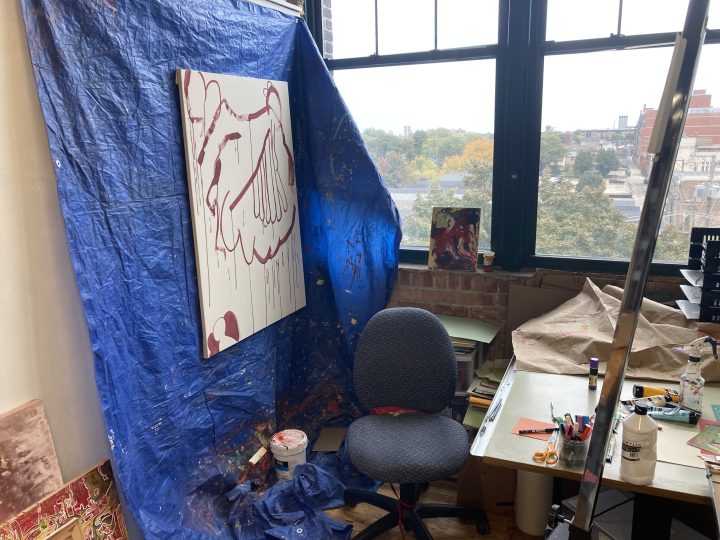
Altogether, the show is small but mighty, unified by a spirit of curiosity, play and dedication to craft. Gina Wynbrandt, who deals in a particularly potent brand of psycho-sexual meta-fiction, will be performing alongside the Project Onward cartoonists at a comics reading event at the Ramova Theater on Sunday, November 9th from 2-4 pm. The show will be up until November 15th.
all photographs are by Anya Davidson.
The post They Can’t Stop: A visit to Perpetual Motion Machine, a Project Onward exhibition appeared first on The Comics Journal.

No comments:
Post a Comment